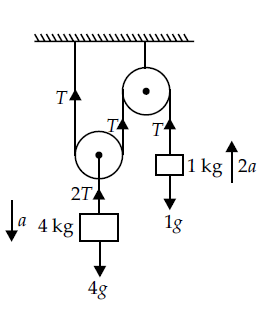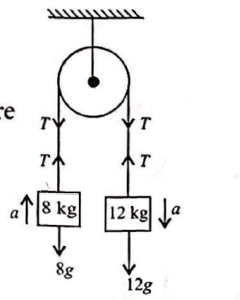Test: Solving Problems in Mechanics (NCERT) - NEET MCQ
15 Questions MCQ Test NCERTs at Fingertips: Textbooks, Tests & Solutions - Test: Solving Problems in Mechanics (NCERT)
An iron block of sides 50 cm x 8 cm x 15 cm has to be pushed along the lloor. The force required will be niinimum_when the surface in contact with ground is
Figure shows a man of mass 55 kg standing stationary with respect to a horizontal conveyor belt that is accelerating with 1 m s-1. The net force acting on the man is


A helicopter of mass 2000 kg rises with a vertical acceleration of 15 m s-2. The total mass of the crew and passengers is 500 kg. Choose the correct statements from the following. (Take g = 10 m s-2)
(i) The force on the floor of the helicopter by the crew and passengers is 1.25 x 104 N vertically downwards.
(ii) The action of the rotor of the helicopter on the surrounding air is 6.25 x 104 vertically downwards.
(iii) Theforceon the helicopter due to the surrounding air is 6.25 x 104 N vertically upwards.
(i) The force on the floor of the helicopter by the crew and passengers is 1.25 x 104 N vertically downwards.
(ii) The action of the rotor of the helicopter on the surrounding air is 6.25 x 104 vertically downwards.
(iii) Theforceon the helicopter due to the surrounding air is 6.25 x 104 N vertically upwards.
A person in an elevator accelerating upwards with an acceleration of 2 m s-2, tosses a coin vertically upwards with a speed of 20 m s-1. After how much time will the coin fall back into his hand? (Take g = 10 m s-2)
A person of mass 50 kg stands on a weighing scale on a lift. If the lift is ascending upwards with a uniform acceleration o f 9 m s-2, what would be the reading of the weighing scale? (Take g = 10m s-2)
Block A of weight 100 N rests on a frictionless inclined plane of slope angle 30° as shown in the figure. A flexible cord attached to A passes over a frictionless pulley and is connected to block B of weight W. Find the weight W for which the system is in equilibrium.
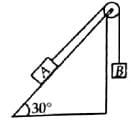
Two blocks of masses 10 kg and 20 kg are connected by a massless string and are placed on a smooth horizontal surface as shown in the figure. If a force F = 600 N is applied to 10 kg block, then the tension in the string is

Two blocks of masses 10kg and 20kg are connected by a massless string and are placed on a smooth horizontal surface as shown in the figure. If force F = 600N is applied to 20kg block, then the tension in the string is

Two masses of 5 kg and 3 kg are suspended with the help of massless inextensible strings as shown in figure. The whole system is going upwards with an acceleration of 2 m s-2. The tensions T( and T2 are respectively (Takeg = 10 m s-2)
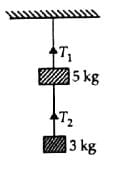
Two blocks each of mass M are resting on a frictionless inclined plane as shown in figure. Then

In the system shown in the figure, the acceleration of 1 kg mass is
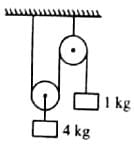
Two blocks of masses 8 kg and 12 kg are connected at the two ends of a light inextensible string. The string passes over a frictionless pulley. The acceleration of the system is
A monkey of mass 40 kg climbs on a massless rope which can stand a maximum tension of 500 N. In which of the following cases will the rope break? (Take g = 10 m s-2)
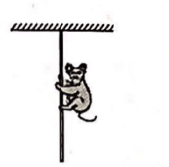
Two blocks of masses of 40 kg and 30 kg connected by a weightless string passing over a frictionless pulley as shown in the figure.

The acceleration of the system would be
A book is lying on the tab le. What is the angle between the action of the book on the table and the reaction of the table on the book?
|
257 docs|234 tests
|




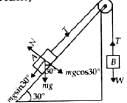



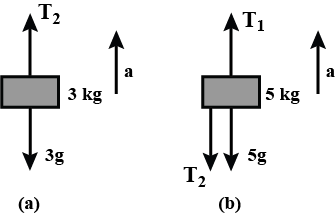

 Since FA > FB the block A moves down the plane.
Since FA > FB the block A moves down the plane.